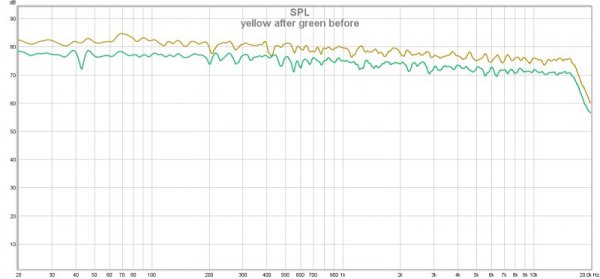Bernt here,
Like everybody else I played a lot of vinyl when I grew up. I put it away when the CD became the dominating medium, so my experience with high end vinyl systems is very limited. But I do like the "less is more" approach to mixing and mastering - and that seems to be the norm more so with vinyl than with digital media these days, so I would not be surprised if there is a lot of music out there that sounds better on vinyl.
RIAA was implemented in Audiolense to support users who wish to combine digital sound correction with vinyl playback. They have to get the signal into the digital domain anyway, and that is by far the best place for any sorts of processing - at least if the signal is present in the digital domain to begin with. The standard RIAA and the enhanced RIAA has been implemented. They were chosen because they appeared to be the two that were both neutral and relevant. Further voicing can be done the regular way in Audiolense if needed. The time coefficients used are the same as the official ones. And in any case, the user can examine the frequency, phase and time domain behavior of both RIAA filters in Audiolense. The frequency response is calculated by using straight forward math with double precision numbers. This frequency response is turned into a minimum phase impulse response with the same frequency response. This RIAA filter can be run as a stand-alone filter or merged with a correction filter.
The frequency and time domain behavior of an RIAA should be the same whether it has been implemented by a passive network, an active network, digital biquads or a FIR filter - as long as the spec has been followed. In practice it is numerical rounding errors in the digital domain vs various degrees of distortion in the analog domain. The rounding errors for single and double precision floating point math will typically be way below what any active hifi component can discriminate and for all practical purposes negligible. I am aware that there are a few analog RIAA solutions out there who has (more or less intended) deviations from the spec, and one should expect them to sound tonally different from those who are made to spec.
The 40 dB attenuation of the low frequences on the vinyl is very easy to equalize by FIR filters. But the signal that enters the pickup appears to be fragile, and same care as always should be taken to preserve the signal integrity as well as possible and amplify the signal to an appropriate line level before the AD conversion. In conjunction with the to the two RIAA filters in Audiolense there is an amplification /attenuation function that enables the user to dial in the right level overall after DA conversion and RIAA correction.
The RIAA in Audiolense has not been tested in "public" to my knowledge so I am curious to see how this works out in practice. In the mean time I'll be happy to answer any further questions about the Riaa correction and Audiolense in general.




